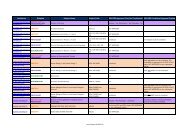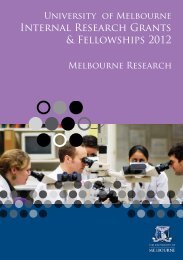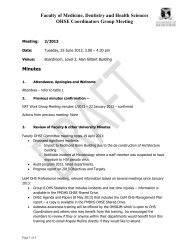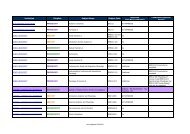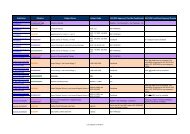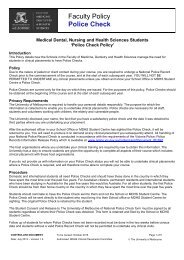A Body of Evidence: An Art Historical perspective on Eighteenth and ...
A Body of Evidence: An Art Historical perspective on Eighteenth and ...
A Body of Evidence: An Art Historical perspective on Eighteenth and ...
Create successful ePaper yourself
Turn your PDF publications into a flip-book with our unique Google optimized e-Paper software.
statues was a subtext that fitted neatly into the halls <str<strong>on</strong>g>of</str<strong>on</strong>g> nineteenth century<br />
academia.<br />
The Ideal <str<strong>on</strong>g>Body</str<strong>on</strong>g><br />
The practice <str<strong>on</strong>g>of</str<strong>on</strong>g> copying the poses <str<strong>on</strong>g>of</str<strong>on</strong>g> classical sculpture in the form <str<strong>on</strong>g>of</str<strong>on</strong>g> écorché<br />
statues to emphasise the muscular system had a further effect, which was to<br />
encourage the pursuit <str<strong>on</strong>g>of</str<strong>on</strong>g> ideal proporti<strong>on</strong> <strong>and</strong> ideal form. Ecorché statues were<br />
distinguished by their careful proporti<strong>on</strong>s from earlier wax anatomical models,<br />
such as those produced by Desnoues <strong>and</strong> Zumbo, which closely followed the<br />
proporti<strong>on</strong>s <str<strong>on</strong>g>of</str<strong>on</strong>g> a particular dissected body, as a c<strong>on</strong>sequence <str<strong>on</strong>g>of</str<strong>on</strong>g> Zumbo’s use <str<strong>on</strong>g>of</str<strong>on</strong>g><br />
casts <strong>and</strong> Desnoues’ insistence that the work represent a sanitised dissected<br />
body. Moreover, the motivati<strong>on</strong>s for creating the two types <str<strong>on</strong>g>of</str<strong>on</strong>g> work were<br />
distinct. The wax models had been made as a resp<strong>on</strong>se to the problems <str<strong>on</strong>g>of</str<strong>on</strong>g><br />
decaying cadavers, but the écorchés were created predominantly for the<br />
instructi<strong>on</strong> <str<strong>on</strong>g>of</str<strong>on</strong>g> practiti<strong>on</strong>ers <str<strong>on</strong>g>of</str<strong>on</strong>g> medicine <strong>and</strong> art.<br />
<str<strong>on</strong>g>An</str<strong>on</strong>g>other factor may have been awareness <str<strong>on</strong>g>of</str<strong>on</strong>g> Albinus’ publicati<strong>on</strong>s, given the<br />
str<strong>on</strong>g associati<strong>on</strong> between model <strong>and</strong> illustrati<strong>on</strong>. 90 Ludwig Choulant c<strong>on</strong>tends<br />
that from the 1730s, when Albinus published his books <strong>on</strong> anatomy, including<br />
Tabulae skeleti et musculorum corporis humani, until 1770, there was a vacillati<strong>on</strong><br />
between Vesalian representati<strong>on</strong> <strong>and</strong> Albinian representati<strong>on</strong>, but after 1770<br />
90 Choulant, 1920, p. 277.



